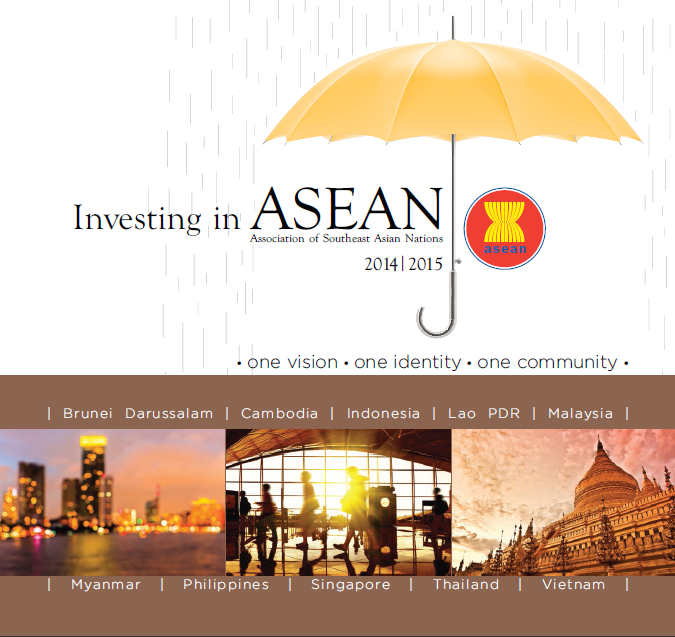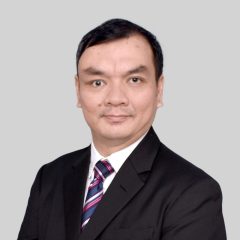| William D. Greenlee Jr. Partner; Managing Director, DFDL Myanmar and Adam McBeth, DFDL Legal & Tax Adviser contributed this article in the latest edition of the ASEAN Guide 2014-2015 which was launched during the 24th ASEAN Summit in Naypyidaw, Myanmar, earlier this month .
An article describes the political and economic development that Myanmar has gone through since the opening in late 2012. With the new Foreign Investment Law that was introduced in November 2012, Myanmar with its many natural resources and a population of about 60 million people quickly became a prime target for foreign investment. |
 |
Myanmar’s political and economic transition from a military dictatorship to the last economic frontier in Asia has been the subject of wide interest in the international business community. Investors were spurred to action in 2012 with the passage of the ground breaking Foreign Investment Law (FIL), which some would say marked the official entry of Myanmar into the world economy.
As a country rich in natural resources and with an estimated population of over 60 million people, it is understandable why Myanmar has quickly become a prime target for foreign investment. According to the Directorate of Investment and Company Administration (DICA), Myanmar attracted US$4.1 billion of Foreign Direct Investment (FDI) during the fiscal year ending 31 March 2014. This is up threefold from the previous fiscal year, where Myanmar received only US$1.42 billion in FDI and is nearly double the annual average FDI amount received since 1988. This upward trend is projected to increase year over year. A 2013 report released by the McKinsey Global Institute projected that Myanmar would see upwards of US$100 billion in FDI over the next two decades, while at the same time, quadrupling its Gross Domestic Product (GDP) over that period.
Despite the continuing reform efforts by the Government and the staggering increase in FDI, some investors are beginning to grow restless and demand faster progress. Still underdeveloped legal and regulatory regimes impose a variety of stumbling blocks on new investors to Myanmar, frustrations which would be eased with greater reforms. The next two years will be vital in assessing Myanmar’s reform efforts. Coupled with the need to assuage the consternation of foreign investors demanding progress, Myanmar has numerous treaty obligations as a member of the Association of Southeast Asian Nations (ASEAN) with which it must comply. To this end, the Minister of National Planning and Economic Development announced in May 2014 that Myanmar would take all necessary steps to implement the ASEAN Economic Community (AEC) by the start of 2015. It appears to be full speed ahead in Myanmar’s efforts to once again become a regional economic power as it had once been.
Myanmar’s integration into a position of leadership in ASEAN
Despite the recent global economic downturn suffered by much of the Western World, the ASEAN Region has continued to grow at a rapid pace. As a whole, the GDP of ASEAN grew by 5.7% in 2012 and 5% in 2013.
Myanmar however outpaced the rest of ASEAN with its GDP estimated to have grown by 6% in 2012 and 6.8% in 2013. Ever since it was announced that starting in 2014 Myanmar would hold the ASEAN chairmanship for the first time, Myanmar’s role with ASEAN has been highlighted. Coupled with its accelerating GDP growth, Myanmar is poised to be among the foremost leaders driving the economic engine of ASEAN.
As the march towards ASEAN integration continues, Myanmar will be responsible for delivering key targets and a clear vision that will guide ASEAN during this critical time. There has been some progress in issuing new laws that encourage foreign investment however there is still a long way to go. The Government continues to work toward this end with Ministries drafting laws, which Parliament will reportedly review and hopefully pass up to 51 this session. Ready or not, Myanmar is obligated to make significant changes within less than two years.
Obligation to implement AEC
In 2007, all ASEAN member states took the bold step of adopting the binding AEC Blueprint, under which all member nations are obliged to take various steps in order to establish AEC by the end of 2015. The overarching goals of AEC are to transform ASEAN into: (1) a single market and production base, (2) a highly competitive economic Region, (3) a Region of equitable economic development, and (4) a Region fully integrated into the global economy.
AEC areas of cooperation include the development of human resources and capacity building, recognition of professional qualifications, closer consultation on macroeconomic and financial policies, trade financing measures, enhanced infrastructure and communications connectivity, development of electronic transactions and integrating industries across the Region to promote regional sourcing and enhancing private sector involvement to establish AEC.
AEC is intended to transform ASEAN into a Region that comprises the following core elements: (1) free flow of goods, (2) free flow of services, (3) free flow of investment, (4) free flow of capital, and (5) free flow of skilled labour.
To download the full article, please click here.

